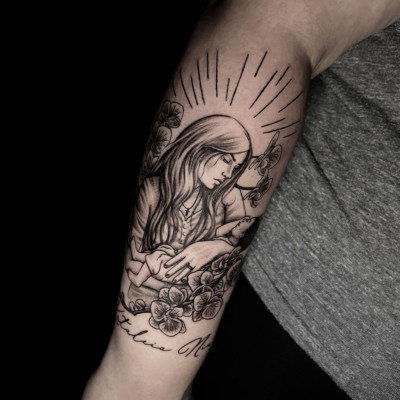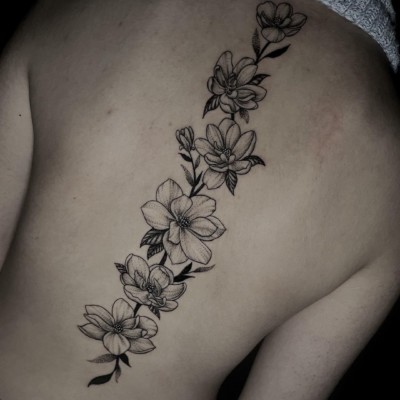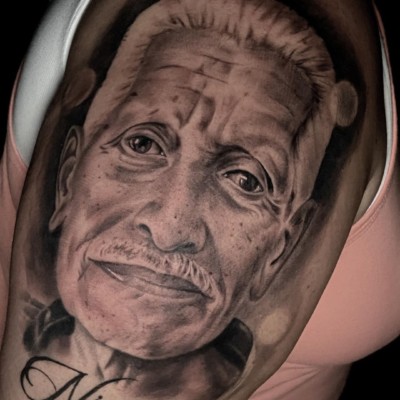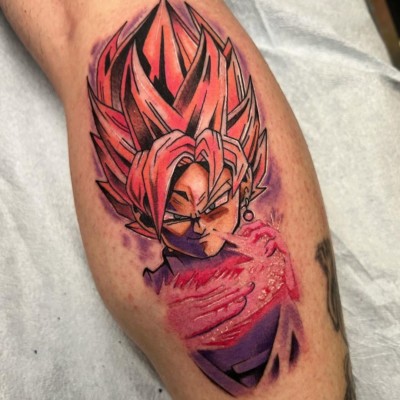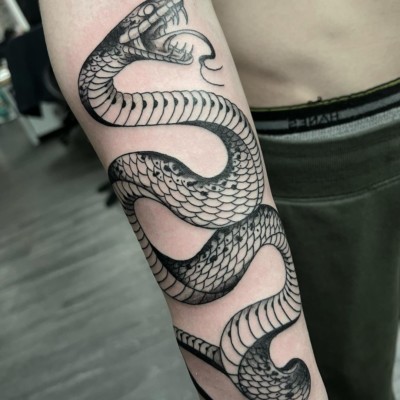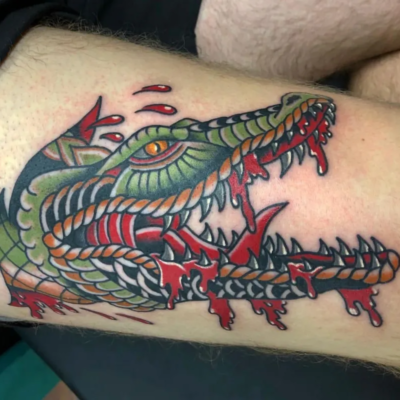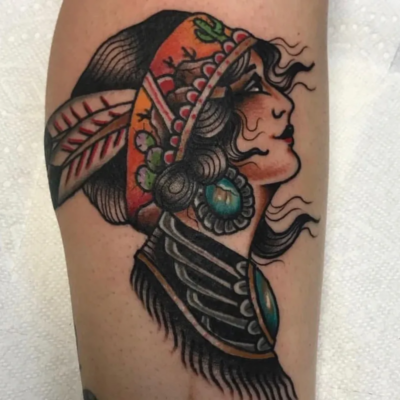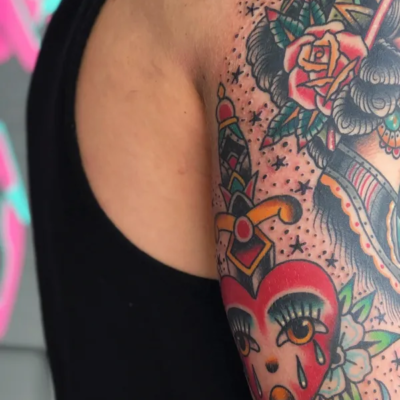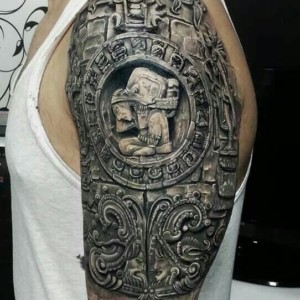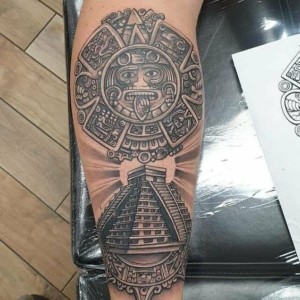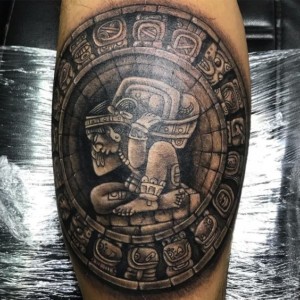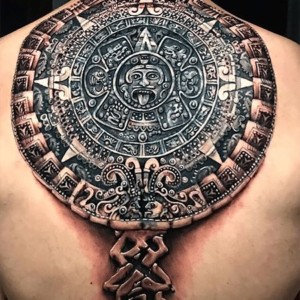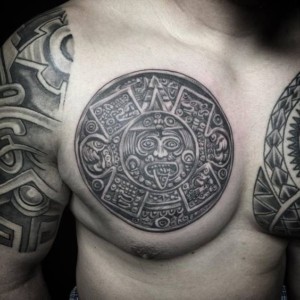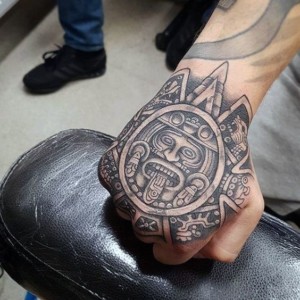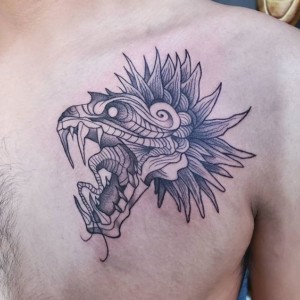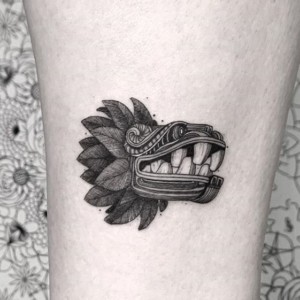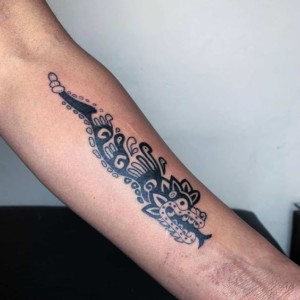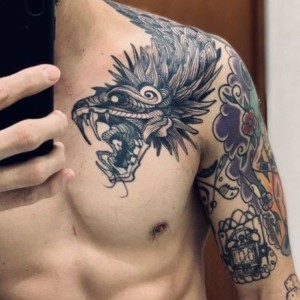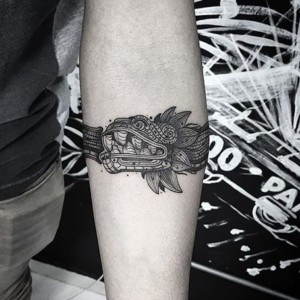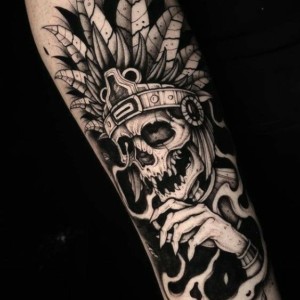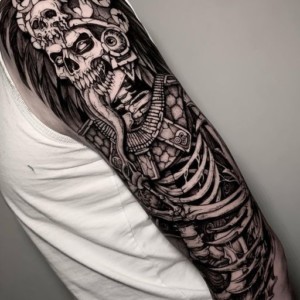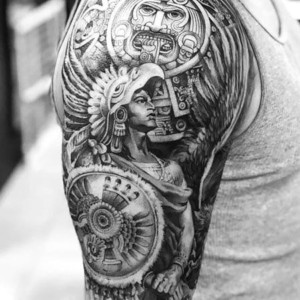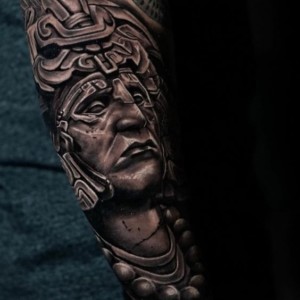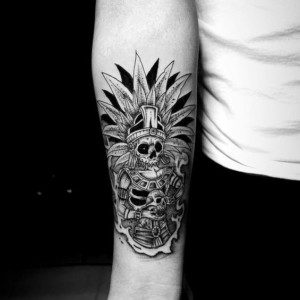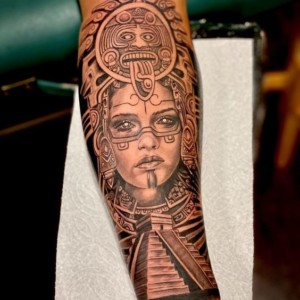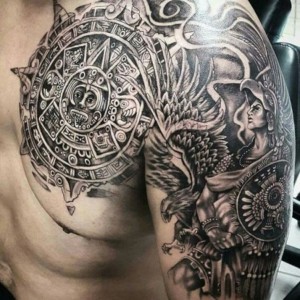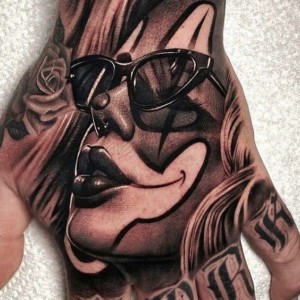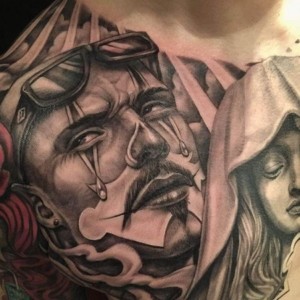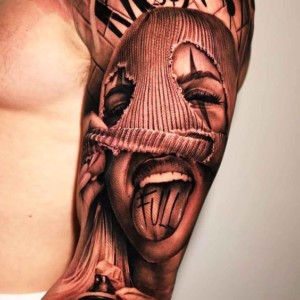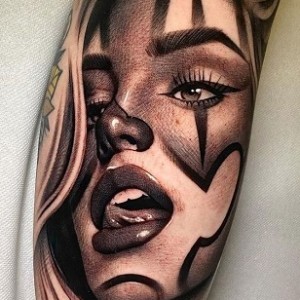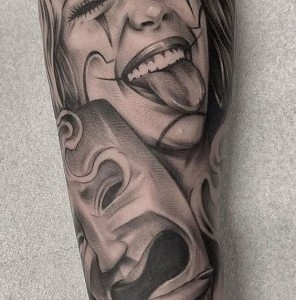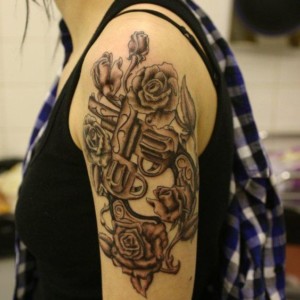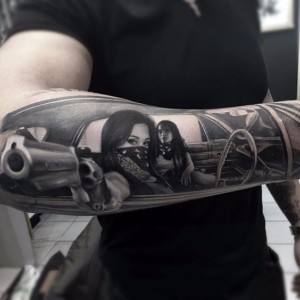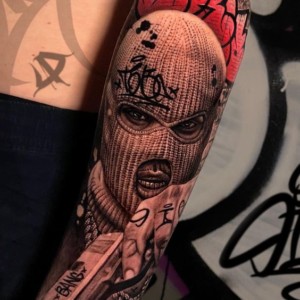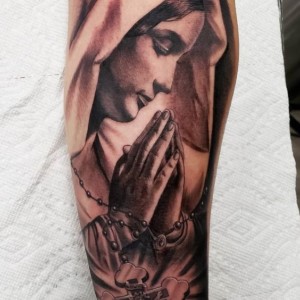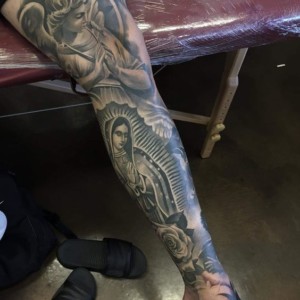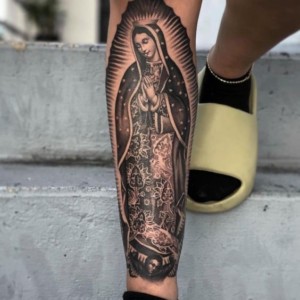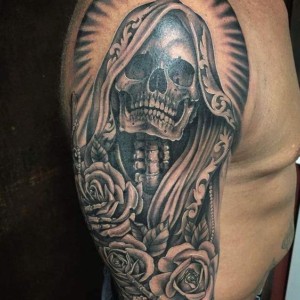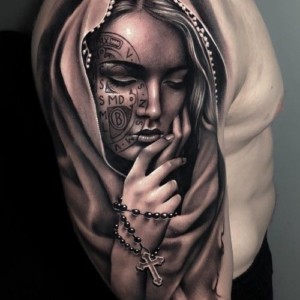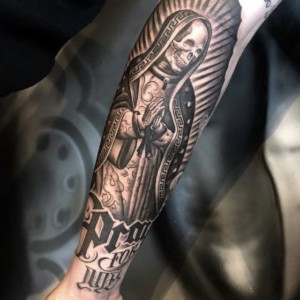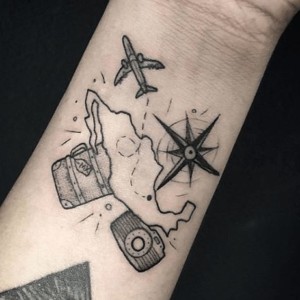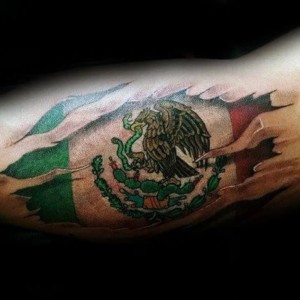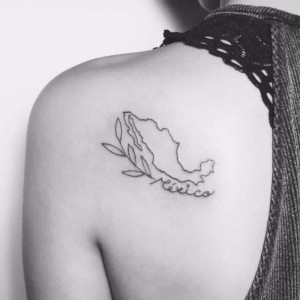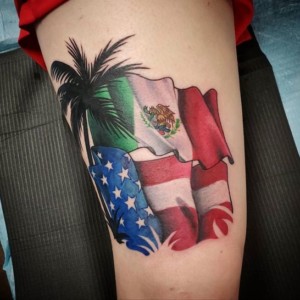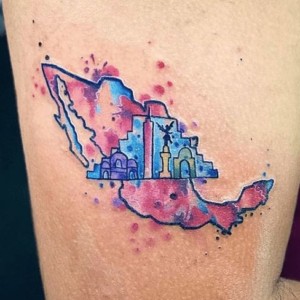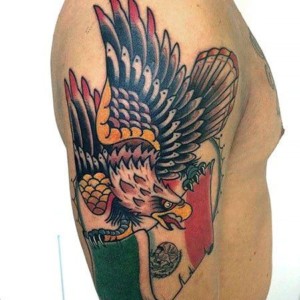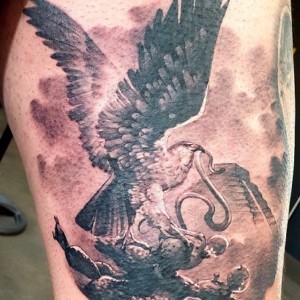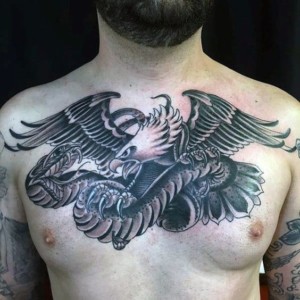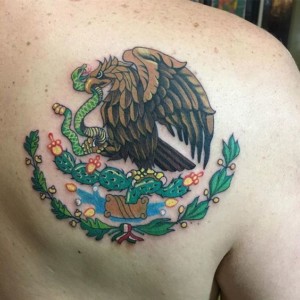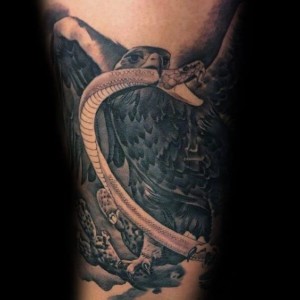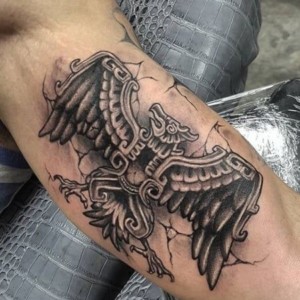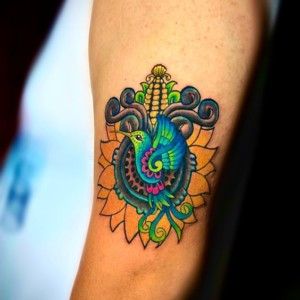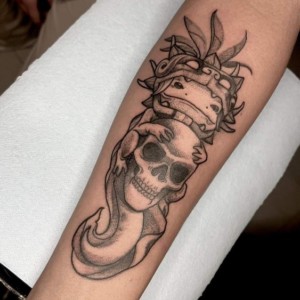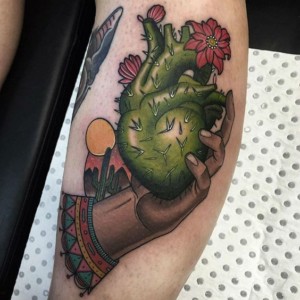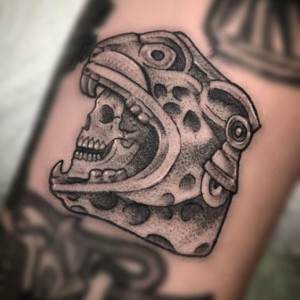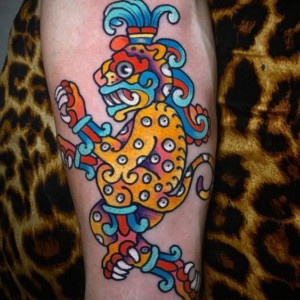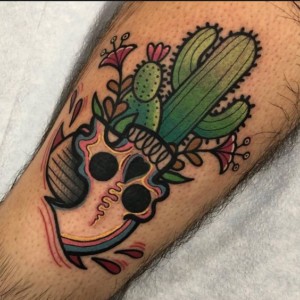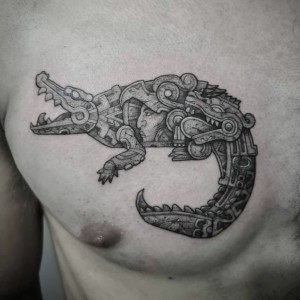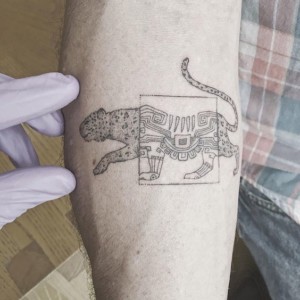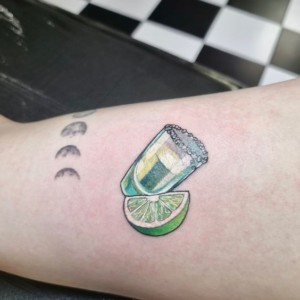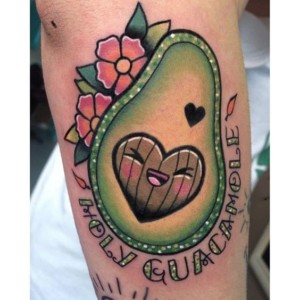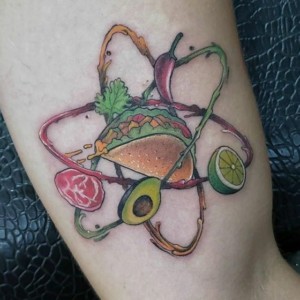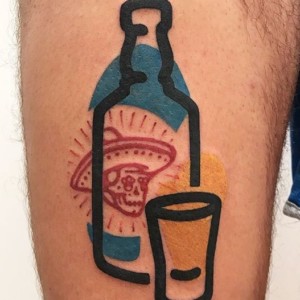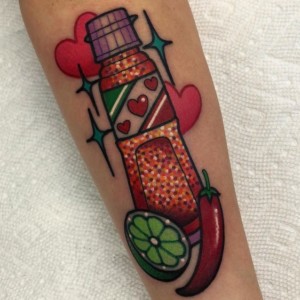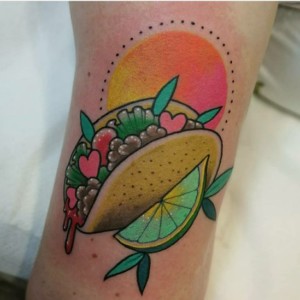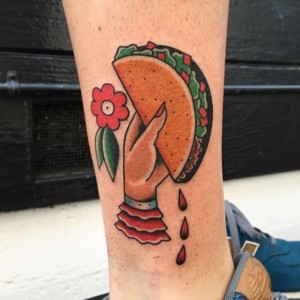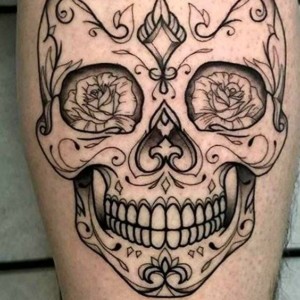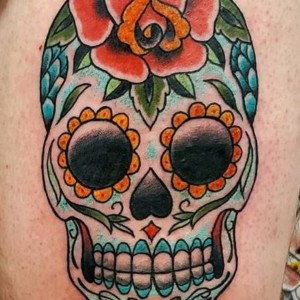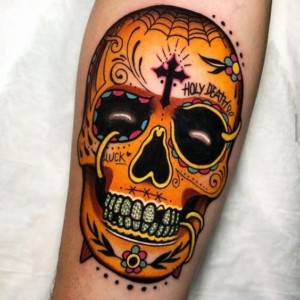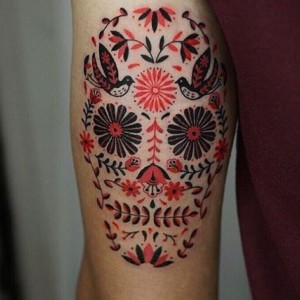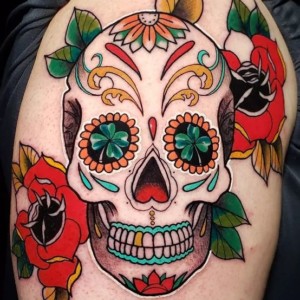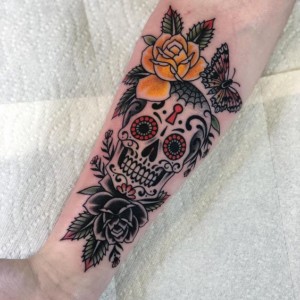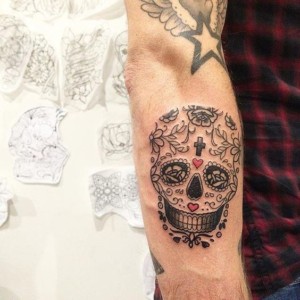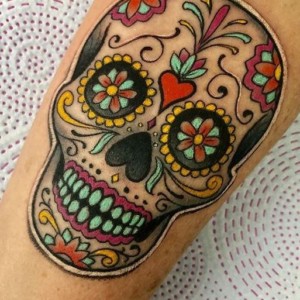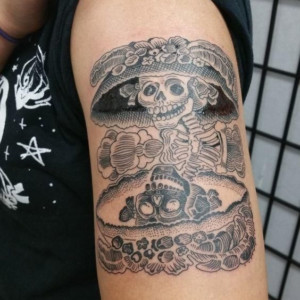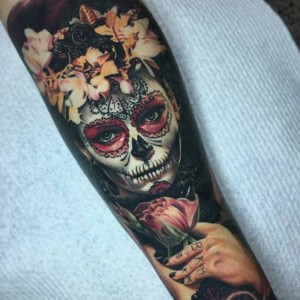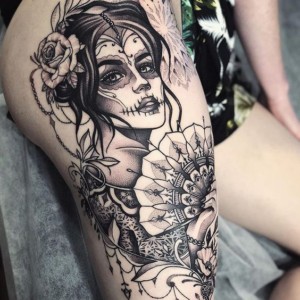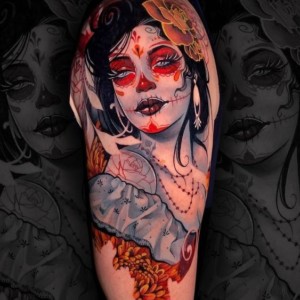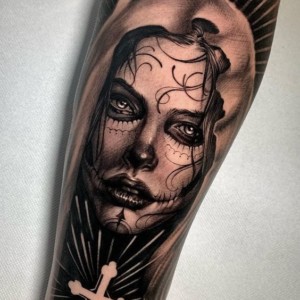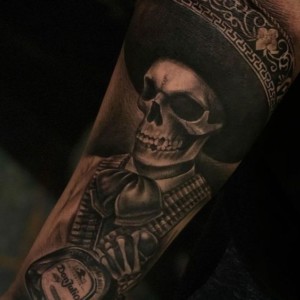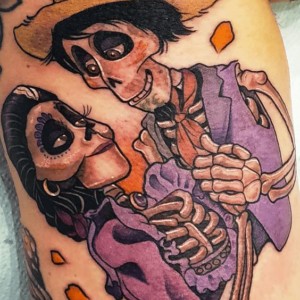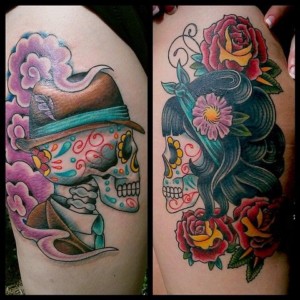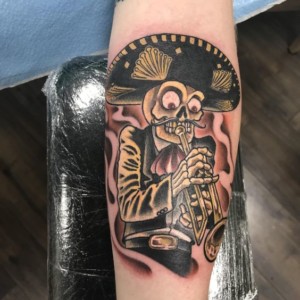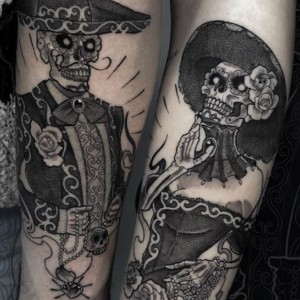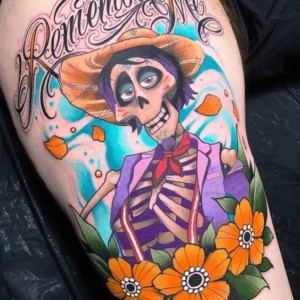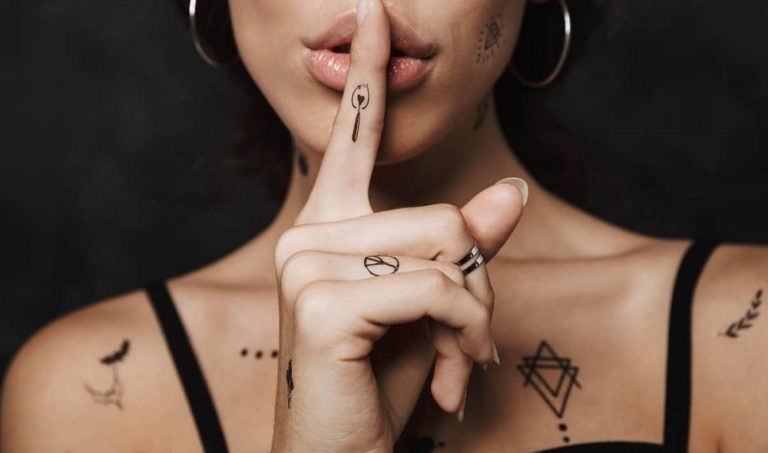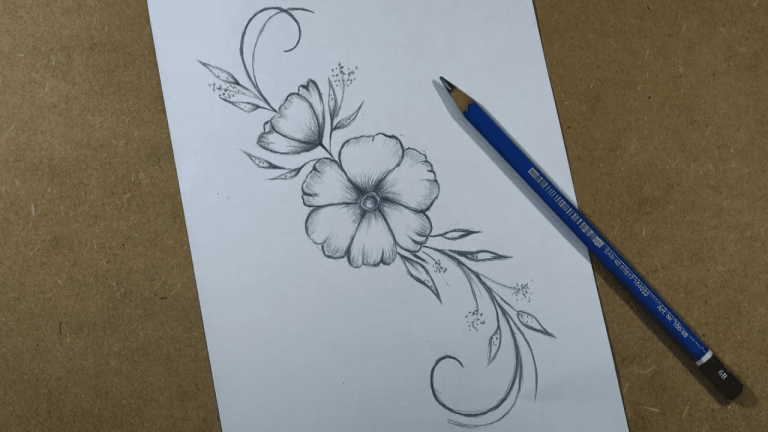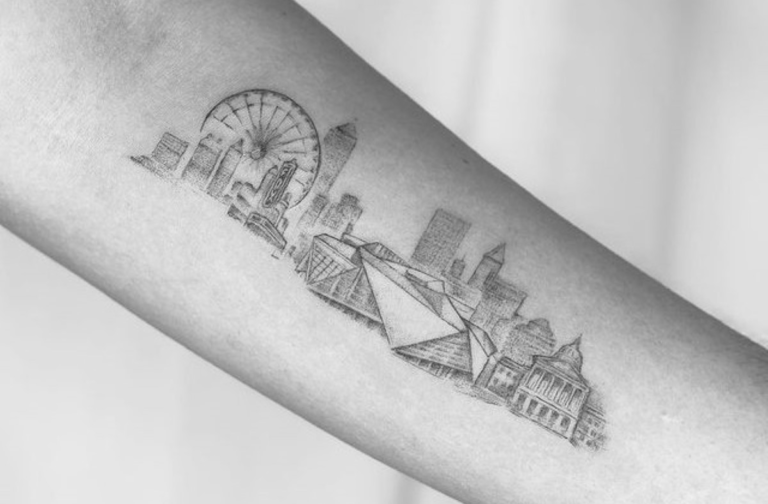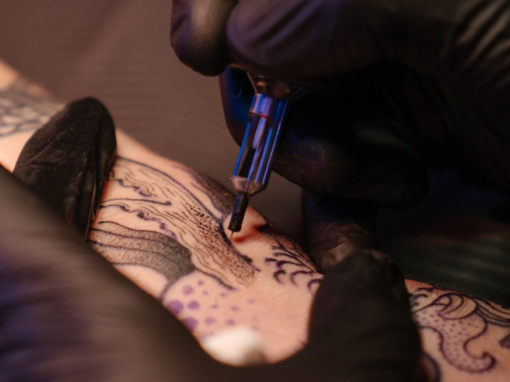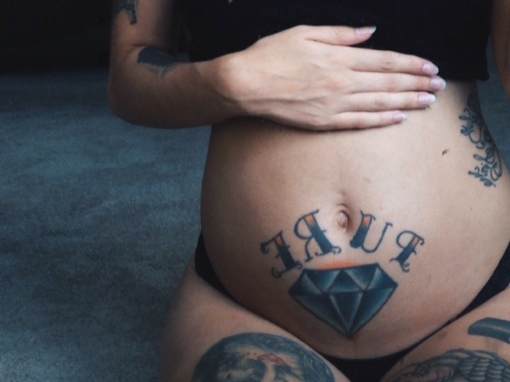Mexico is an amazing country of contrasts, even the world-famous Day of the Dead holiday joins a celebration of life, and mourning for the departed. This country is home to people who so sincerely love life that it is inspiring. Mexico surprisingly combines a constant celebration and a deep respect for ancestors and their traditions. It’s an endless source of bold and meaningful tattoo designs that we’ve gathered to inspire your next tattoo adventure.
In this article, we invite you to dive into the colorful world of Mexican tattoos and find inspiration for your next ink. The Day of the Dead is probably the most colorful manifestation of Mexican culture, which is reflected in tattoos. If you’re more into black and gray designs, you’ll love our collection of Chicano-style tattoos. We also invite you to learn about the ancient history of Aztec and Mayan tattoos. And if you prefer smaller tattoos, be sure to check out our collection of Mexican national symbols designs that will make you smile.
Check the best tattoo artists for your future Mexican tattoo:
-

Sharleene Rivera
- Black and Grey
- Portraiture
- Realism
-

Kharlaa Ramirez
- Black and Grey
- Illustrative
- Realism
-

Eso Mc
- American traditional
-
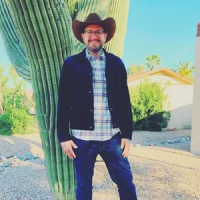
Mikey Sarratt
- American traditional
Traditional Mexican Tattoos and Their Origins
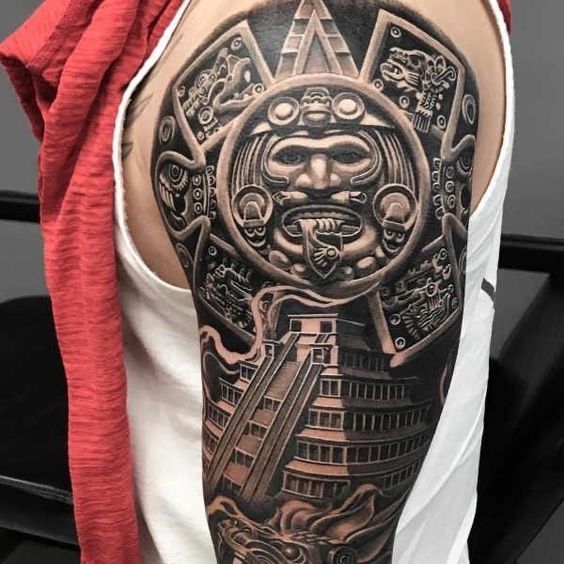
There are many Mexican tattoo ideas, but not all of them are rooted in the country’s past. Mexico-inspired tattoos are the work of modern tattoo artists, but now we will talk about the style of Mexican tattoos with a deep history. There are only two styles that are truly traditional in this country. You may have already guessed that we are talking about the tattoos of the ancient Aztec and Mayan civilizations and Chicano tattoos.
These styles are very different, but they each have many admirers. They originated at different times and, in some sense, in different countries, they convey different aspects of culture and tradition. Ancient civilization tattoos and Chicano tattoos are beautiful in their differences and how uniquely each style captures the spirit of Mexico.
Let’s take a look at these two styles and find inspiration in stunning designs!
Aztec and Mayan Tattoos
Surprisingly, the art of tattooing existed in what is now Mexico even before Europeans came to Latin America. Aztec and Mayan tattoos had sacred meanings, and modern Mexican tribal tattoos are inspired by them. Of course, there were no tattoo machines at that time, so they pushed the ink under the skin with the cactus needles. And instead of ink, they used natural materials such as ash and charcoal.
Mayan tattoos drew inspiration from nature, using images of animals, plants, gods, and celestial bodies. It was a form of union with the gods and a connection to the natural world. Some researchers say that according to Mayan beliefs, tattoos of the gods endowed the wearers with the power of the gods.
Aztec tattoos, on the other hand, were often complex patterns inspired by their religious beliefs and gods. Such tattoos were very important as they demonstrated social status, achievement, and spiritual connection to the gods. In addition to tattoos, they actively used piercings and scarring for these purposes.
- Calendars
The Aztec and Mayan civilizations are known for their calendars, which amaze modern researchers with their accuracy. People choose tattoos depicting them, attracted by the depth of knowledge and the connection to ancient wisdom these symbols represent.
The round stone monolith called the Sun Stone is often referred to as the Aztec calendar, although this is not entirely true. It depicts elements of the solar cult, with the sun god Tonatiuh at the center holding out his tongue. It is surrounded by celestial bodies important for religious ceremonies, and only the next circle symbolizes the annual cycle and important religious events.
The Mayan calendar follows the Aztec tradition, so some of their calendars depict the sun god as well, while in others the person with a stone behind his back takes his place. With the Long calendar, the Maya accurately tracked events important to them, such as the supposed end of the world, centuries in advance.
- Feathered serpent
There is probably no one who would not recognize the feathered serpent Quetzalcoatl. He is a character of Aztec mythology, and in Mayan legends, you can meet him under the name Kukulcan. Quetzalcoatl has a snake-like body adorned with shiny emerald feathers, although he is depicted in other colors.
The Aztecs and Maya viewed him as a symbol of wisdom, knowledge, and spirituality. In legends, Quetzalcoatl played a role in the creation of the world and cosmic renewal, it is believed that he is associated with the cycles of life and death. Modern tattoo artists often portray the feathered serpent as fierce, as it is associated with freedom and the breaking of chains.
- Ancient warriors
All peoples of ancient times had respect for warriors, and the Aztec and Mayan civilizations were no exception. Their brave warriors played a very important role in society and earned fame for their bravery and strength on the battlefield. But tattoos usually depict them participating in rituals in traditional clothing and with weapons in their hands.
Ancient warriors are often depicted as skeletons as if to say that although they are no longer alive, their glory lives on. In modern tattoo art, these designs serve as a tribute to the past and carry a legacy of bravery and fortitude.
Chicano Tattoos
Now let’s move closer to modern times because here Mexican tattoos also have something to offer, such as Chicano tattoos. This style originated in the 1940s and 1950s and has become an embodiment of Mexican-American culture. It has its roots in the prison world, where Mexican criminal gangs used them to mark their members.
If you like this style, you are free to get such ink, as today Chicano tattoos have gone beyond gang culture. In the modern world, people no longer stigmatize tattoos, and now it is a form of self-expression available to everyone. Chicano tattoos are popular among Americans and serve as a way to express pride in Mexican-American heritage and identity.
- Masks and clowns
Chicano tattoos often feature clown masks, which carry a dual meaning. These symbols reflect the idea that people often wear masks, hiding their true emotions and problems behind a smile. Such a tattoo is like saying “Laugh now, cry later“.
- Guns and roses
Guns and roses are another common theme in Chicano tattoos. These inks symbolize the contrast between the harsh realities of criminal life, represented by weapons, and the beauty and growth that can arise from hardship, symbolized by roses.
- Saints and Virgin Mary
Most of the Mexican population is Catholic and considers themselves very religious people. This is reflected in Chicano tattoos, which often feature images of saints and the Virgin Mary. Saints and the Virgin Mary tattoos are seen as protectors, providing guidance and support in times of need.
Tattoos of Mexican National Symbols
Mexico attracts tourists not only with its ancient traditions, but also with beautiful nature, delicious food, and warm-hearted people. It is enough to visit this country once to fall in love with it forever. Mexico-inspired tattoos are a great way to keep happy memories forever on your skin and bring a touch of sunny Mexico into your life. Most often, Mexican culture inks are small designs that will bring bright colors to your style.
Mexican Flag and Map
Mexican flag tattoos are the best choice to express patriotism and pride in the country. Another meaningful and small Mexican tattoo design is a map of Mexico. These two designs are a popular choice, especially among Mexicans and people with Mexican roots.
Like in any country, the flag is a strong symbol for Mexico. It has three bright colors, each of which carries a specific meaning. Green represents hope and Mexico’s beautiful landscapes, white stands for purity, and red signify the blood of the national heroes who fought for Mexico’s independence. Many tattoos depict the flag as if it’s bursting through the skin, symbolizing that it runs deep within the wearer’s veins.
Mexican Golden Eagle
Mexican golden eagle tattoos, just like flag tattoos, hold a special place in the hearts of Mexicans. The association of the eagle with Mexican identity goes back to the ancient Aztecs.
They had a legend about the founding of the capital Tenochtitlan. The gods themselves indicated the right place for the future city by sending the Aztecs an eagle sitting on a cactus and eating a snake. This legend and image of the eagle are deeply intertwined with the history and values of the nation, making it a meaningful choice for a tattoo. Inks of this majestic bird often symbolize strength, courage, and freedom.
National Plants and Animals
In Mexican culture, many animals and plants are considered national symbols, but among the most popular are the nopal cactus and the jaguar. Tattoos depicting these symbols reflect a deep connection to the land of Mexico and its ancient traditions.
The Aztecs and Mayans gave deep meaning to the plants and animals that surrounded them and of course, this symbolism came to tattoos. The nopal cactus is a hardy plant that Mexicans use in their cuisine and consider very healthy. It is associated with endurance and strength, making it popular for tattoos. The jaguar has always symbolized strength and power as a skilled and dangerous predator. It was considered an animal associated with shamans, the night, and the underworld.
Mexican Cuisine
Mexican cuisine is famous all over the world for its delicious flavors and variety of dishes. Many people express their love for this cuisine with tattoos depicting iconic Mexican dishes such as tacos, chili, and tequila. These are usually small and cute designs that both men and women enjoy. Mexican food tattoos symbolize not only Mexican cuisine but also the vibrant and energetic spirit of the country.
The Day of the Dead Tattoo Ideas
The Day of the Dead, or el Día de los Muertos, is a Mexican holiday known around the world, including through the wonderful animated film Coco by the Pixar Studio. This holiday amazingly blends Aztec and Mayan beliefs and Catholic traditions. On this day, people remember their departed relatives and celebrate, because the souls of their ancestors return for a short time to the world of the living.
Many people find inspiration for tattoos in the rich traditions and symbols associated with this special day. So if you want to get a tattoo that will be associated with the traditions of Mexico, then you will love our collection of designs below.
Sugar Skulls
Sugar skulls are the most iconic and recognizable symbols of the Day of the Dead holiday. These beautifully designed skulls are often made in bright colors, and decorated with floral patterns and ornaments. Of course, such a colorful design is reflected in the ink and has become one of the most famous variations of Mexican tattoos. Mexicans express their joy through bright rich colors, they mourn for the dead but do not forget to celebrate life.
Sugar skulls are not meant to frighten, but to serve as a symbol of remembering and honoring the deceased. They are usually filled with flowers, especially marigolds, as their smell is believed to call the dead to join in the celebration of the living.
La Catrina
La Catrina is a graceful and elegant female skeleton. She is often depicted in a richly decorated dress, symbolizing that neither rich nor poor can escape death. This iconic image appeared in illustrations by Mexican artist José Guadalupe Posada in the early 20th century and has since become a symbol of the holiday. Although mentions of the skeleton girl can be found in Aztec legends about the world of the dead, now it combines ancient beliefs and Catholicism brought by Europeans. La Catrina is a reminder that death is part of life and that all people are equal in the face of death.
Skeletons
Skeletons hold an important place in the celebration of the Day of the Dead and symbolize the spirits of the dead who return to the living during this special time. The animated film Coco, by Pixar Studio, very accurately conveys the atmosphere and bright colors of the Day of the Dead. When the main character Miguel gets into the world of the dead, life there feels like an eternal celebration, and the main fear of the inhabitants is to be forgotten by the living. Skeletal couples, often dancing or embracing, symbolize the eternal love and connection between the living and the dead.
Skeletons are often depicted cheerfully and colorfully, reminding us to enjoy every moment of life. Each color used in these designs carries a special meaning:
- White symbolizes purity and the spiritual realm
- Red symbolizes the essence of life and vitality
- Purple symbolizes mourning and respect for the departed
- Pink skulls are associated with happiness and celebration
Summary
Mexican tattoos are living symbols of the history, culture, and traditions of this country. Each ink carries a story that is like a bridge connecting past and present. In search of inspiration, we delved into the Aztec and Mayan tattoo culture and learned the history of the Chicano style. Moreover, we looked at a collection of stunning Day of the Dead tattoos.
Despite the deep cultural significance of such tattoos, they can depict simple and cute details, such as national cuisine or sugar skulls. This just proves that inspiration for Mexican tattoos can come from anything, the main thing is not to limit your imagination.
FAQ
🔎 What Is the Mexican Tattoo Style Called?
Mexican tattooing is often referred to as Chicano or Mexican-American style. It originated in Mexican communities in the United States in the 1940s and 1950s. At the time, these bold black and gray tattoos were associated with criminal culture, but today anyone can do this design.
🤔 How Did the Aztecs Get Their Tattoos?
Aztec tattoos were created by using a sharp instrument, like a cactus spine, to puncture the skin. Then, they inserted ink made from natural materials, like ash or charcoal, into the punctured area. These tattoos often had cultural and religious significance, and they were used to show a person’s status, accomplishments, and connections to their gods.
👀 Are Tattoos Legal in Mexico?
Yes, tattoos are legal in Mexico. Tattooing is a common and legal practice in the country, and there are many tattoo shops and artists in Mexico. However, it is important to make sure that the tattoo artist you choose works in a licensed and sanitary shop that follows safety and hygiene standards.
💀 What Do Sugar Skull Tattoos Mean?
Sugar skull tattoos depict one of the main symbols of the Mexican Day of the Dead. Such tattoos symbolize the cycle of life, and death, and serve as a joyful and colorful tribute to those who have passed away. Sugar skull tattoos can also represent the idea of celebrating life and not being afraid of death. You can find sugar skull tattoo ideas in our article.
🌵 Can I Get a Mexican Flag Tattoo if I’m Not Mexican?
Yes, you can get a Mexican flag tattoo even if you are not Mexican. There are usually no legal restrictions on getting a tattoo depicting the national flag of another country. However, it is important to be respectful and consider the cultural significance of the flag. You may find that the symbolism and meaning of the Mexican flag will add uniqueness to your tattoo.

